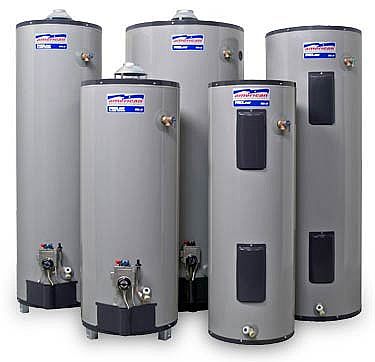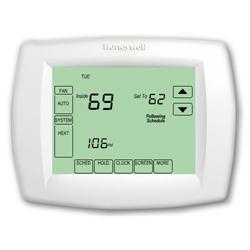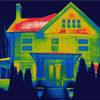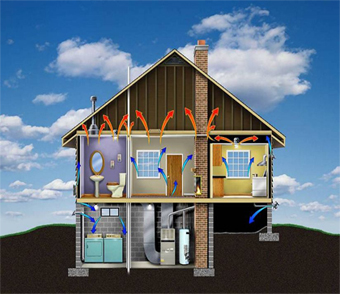Why You Should Turn the Heat Down in Your Home (and other Energy Saving Tips)

Everyone wants to save money, and a lot of you are Eco-conscious and try to save our natural resources the best that you can. Because of this, there are a lot of new things out on the market, and some really simple things you can do yourself to help do your part and reduce your carbon footprint, all while saving a few extra dollars each month with some simple cost reduction tips. Just remember, an A/C unit is a complicated machine, and any repairs or modifications are not recommended. You should always let a qualified A/C & R tech work on and do your A/C and heating repair. These tips are simple things that most home owners and even renters can do to help try to reduce their heating bills, as well as reduce your carbon footprint.

1. Socks.
When your feet are cold, you are cold. Wearing socks during the winter and cold months can help you feel warmer, and wrapping up in a blanket or throwing on a sweater or jacket can keep you warm without having to use your heater, saving you some money on your electric bill.

2. Use your homes natural heat.
All around your home are activities that create heat. Cooking, showering, drying laundry, all for example, are things commonly done around the home that will emit heat. While showering, leave the door open so steam can travel to the other rooms, and don’t turn on any ventilation. With the door open, there is really no need, and it will draw all the warmth you are trying to keep in out of the home.

3. Lower your thermostat.
Crazy as that sounds, you really won’t notice a difference in a few degrees, and that move alone can take almost 5-10% off your heating bill. Always turn the heat down or off when you’re not going to be home for awhile.

4. Turn down your water heater.
Also, turning your water heater down some won’t be noticeable. Most water heaters are set to roughly 140 degrees, so turning the dial back to 120 degrees saves heating water almost 20 degrees, and you wont be able to notice the difference, but you will see one on your bill, as your likely to save 5-10%.

5. Buy a programmable thermostat.
Using a programmable thermostat is a great way to save money because they are programmable. This means you can set your house up to heat and cool to your schedule. Have it kick on 20 minutes before you get up to keep the house comfortable, have it automatically shut off while at work, and program it to come back on for your evenings home. Using a programmable thermostat and you can save another 5-10% off your heating bill. If you are unsure, or are just not capable of replacing your thermostat, any reputable A/C &R tech should be able to come to your home and install it for you, correctly, the first time.

6. Once heated (or cooled) don’t let the heat (or cold) escape.
Keep all windows and door shut, and keep them in good repair. Drafty doors and windows are the main culprits for heat loss in homes. But don’t forget your fireplace, and make sure the flue is shut (unless it’s in use of course) and turn off all ventilation fans (kitchen, bathroom, ect.) as they can pump the heat (or cold) you’re trying to keep in.

7. Get a checkup.
Along with properly using your heating/cooling unit to its best potential, get your unit checked out periodically to make sure it is running properly and efficiently. A qualified A/C & R tech can also do a quick inspection of your home and let you know where your heat and A/C is escaping, and ways to better insulate your home. Also, check all filters monthly, to allow air to circulate through your home with ease.

8. Keep all windows covered and closed at night.
When it’s dark, there is no heat, when its bright out, use the natural sunlight to help heat your home. Most houses, like a greenhouse, are designed to keep the heat (or coolness) inside. When you have your windows open at night, the heat transferred with the outside cooler air happens more often, making your home colder.

9. Light a candle.
This isn’t for warmth, but to find all the drafts. Light the candle, then move it around outside door frames and windows, and watch the flame and smoke. If it is going strait up, then there is no air coming in. But if the smoke or flame moves away from the window or door, there is cold air traveling inside. To fix, install some low cost caulking or weather stripping, or consider adding or replacing insulation.


10. Install new insulation.
Installing new insulation, especially in older homes, is a very good way to reduce your heating bills. Older insulation may not be as good as todays, and it also might be damaged, or inoperable because of animals, or mold, or other factors. Fresh, properly installed insulation can dramatically affect the way a home retains heat and cold, and although expensive, can be a very good way at getting a drafty older home to stay warm year after year. It might cost a little, but you should see a return on your investment within a few years.
Some Helpful Links
- Air Filters - Everything You Wanted to Know (and Hopefully More!)
Air Filters are a common, everyday thing in everyone's home that is equipped with an AC unit. But few know about the types of filters and filtration methods, and what they can do to help improve air quality within their home. - How Does an AC System Work?
We all know what a A/C system is, where its located, and what it does. But do you know how it works? How it cools the air, then distributes it throughout your home or office? - Ways to Stay Cool this Summer.
This is a posting on some of the ways to help reduce your carbon footprint, as well as reduce your cooling and electrical bill. With 15, simple, you can do it at home, tips, you should be able to reduce your cooling bill as much as 20%, maybe more! - Common A/C Problems (and Solutions to Them)
Having A/C problems alone are a total bummer, but having them during summer can be almost catastrophic. Prevent your system from going out, and preform a check up and some basic maintenance today to prevent your A/C unit from dying tomorrow. - Air Conditioning (AC) Repair
Beachside AC is a full service air conditioning and heating repair company. Servicing Destin, Fort Walton, Freeport, Crestview, Santa Rosa Beach and Niceville.








